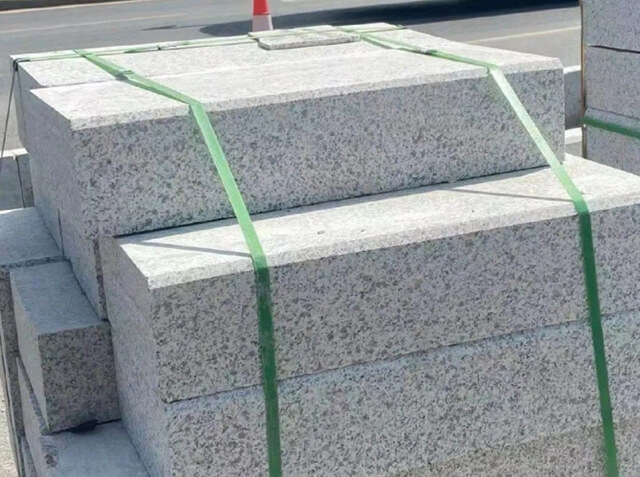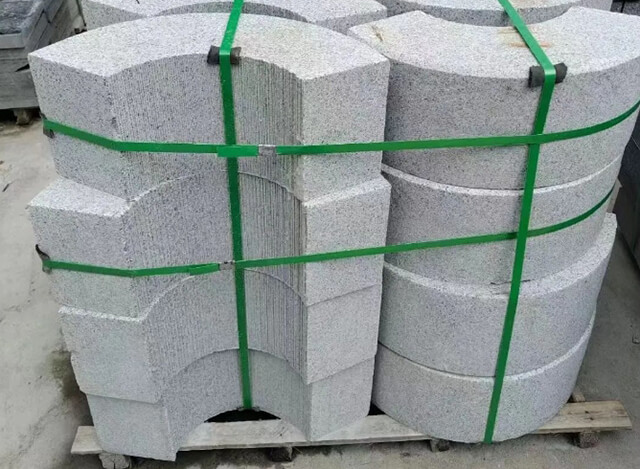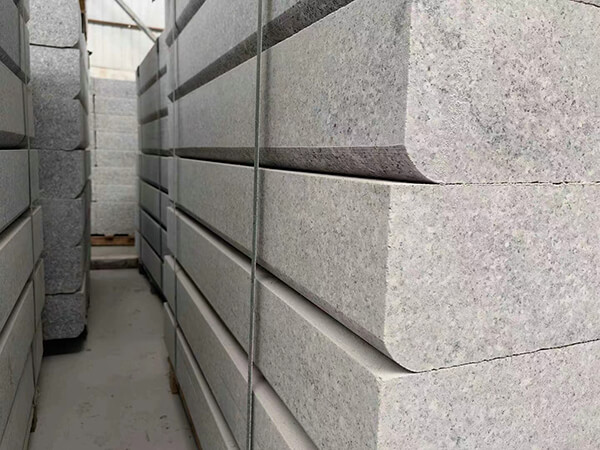Author:Dafon Kerbstone Machine FROM:Stone Machine Manufacturer TIME:2024-07-03
Stone chamfering refers to the process of trimming the edges of stone by mechanical or manual processes to make them smooth and form a chamfer on the edge. The size of the chamfer is usually measured in millimeters or centimeters, and common chamfer sizes include 1 cm, 2 cm, etc. The main purpose of stone chamfering is to eliminate the sharpness of the stone corners, increase its safety, and also improve the beauty of the stone. The larger the size of the chamfer, the less sharp the corners are, but it will also reduce the available area of the stone.
The selection of stone chamfer size needs to be comprehensively considered according to specific application scenarios, stone types, design requirements and other factors. Generally speaking, chamfer sizes can be divided into the following types:
1. Small chamfer
Small chamfers are generally suitable for scenes with high requirements for aesthetics but relatively low requirements for safety. Such as indoor floor paving, wall decoration, etc. The size of small chamfers is usually between a few millimeters and more than ten millimeters, which can not only maintain the original texture of the stone, but also improve the overall aesthetics.
2. Medium chamfer
Medium chamfers are suitable for scenes with dense traffic and certain requirements for safety and aesthetics. Such as shopping mall floors, hospital corridors, etc. The size of medium chamfers is usually between more than ten millimeters and tens of millimeters, which can not only meet safety requirements, but also maintain the beauty of the stone.
3. Large chamfer
Large chamfers are suitable for scenes with extremely high requirements for safety and comfort. Such as school stair steps, corners of public facilities, etc. The size of large chamfers is usually between tens of millimeters and hundreds of millimeters, which can effectively prevent people from getting injured during activities and improve the comfort of use.

As an important material in the fields of architecture, decoration, sculpture, etc., stone has always attracted much attention for its processing skills. As a common processing method, stone chamfering not only has a beautiful appearance, but also can enhance the practicality and safety of stone to a certain extent.
1. Beautiful decoration
Stone chamfering can make the edge of the stone smoother and rounder, remove the original sharpness, and thus enhance the overall aesthetics. In scenes such as building exterior walls, floor paving, window sills, stair steps, etc., stone chamfering can make the entire space appear more harmonious and warm, giving people a comfortable and natural feeling.
2. Safety protection
An important use of stone chamfering is to enhance safety. In places with dense traffic and frequent activities, such as shopping malls, hospitals, schools, etc., stone chamfering can effectively prevent people from being scratched or bumped by sharp stone edges while walking or moving. Especially in the corners and edges of public facilities, chamfering is an indispensable safety measure.
3. Reduce stress concentration
When stone is used, when it is subjected to external forces, stress is easily concentrated at the corners, causing damage or cracking of the stone. Chamfering can disperse stress and reduce stress concentration, thereby improving the durability and stability of the stone.
4. Convenient construction
During the installation and splicing of stones, chamfering can make the connection between stones tighter and smoother, reducing gaps and unevenness. This not only improves construction efficiency, but also helps to improve the overall project quality.

There are mainly the following processing methods for chamfering:
1. Manual grinding
Manual grinding is a traditional chamfering method that uses a grinding stone or sandpaper to grind the edge of the stone until the desired chamfer shape is formed. This method is simple to operate, but the efficiency is low and it is prone to unevenness.
2. Mechanical processing
Mechanical processing is currently the most commonly used chamfering method, using a professional stone chamfering machine or edge grinding machine to process the stone. This method is efficient and precise, and can process chamfers of various shapes and sizes.
3. Water jet cutting
Water jet cutting is a new type of chamfering method that uses a high-pressure water jet to cut the stone. This method has high cutting accuracy, does not produce thermal effects, and does not damage the surface structure of the stone.

When chamfering stone, the following points should be noted:
1. The chamfer size should be selected according to the actual situation
The selection of chamfer size should be comprehensively considered based on specific application scenarios, stone types, design requirements and other factors. Too small chamfer size may not effectively eliminate safety hazards, and too large chamfer size will waste stone.
2. Choose the appropriate processing method for chamfering
Different processing methods have different characteristics and scope of application.